- News
- Reviews
- Bikes
- Accessories
- Accessories - misc
- Computer mounts
- Bags
- Bar ends
- Bike bags & cases
- Bottle cages
- Bottles
- Cameras
- Car racks
- Child seats
- Computers
- Glasses
- GPS units
- Helmets
- Lights - front
- Lights - rear
- Lights - sets
- Locks
- Mirrors
- Mudguards
- Racks
- Pumps & CO2 inflators
- Puncture kits
- Reflectives
- Smart watches
- Stands and racks
- Trailers
- Clothing
- Components
- Bar tape & grips
- Bottom brackets
- Brake & gear cables
- Brake & STI levers
- Brake pads & spares
- Brakes
- Cassettes & freewheels
- Chains
- Chainsets & chainrings
- Derailleurs - front
- Derailleurs - rear
- Forks
- Gear levers & shifters
- Groupsets
- Handlebars & extensions
- Headsets
- Hubs
- Inner tubes
- Pedals
- Quick releases & skewers
- Saddles
- Seatposts
- Stems
- Wheels
- Tyres
- Health, fitness and nutrition
- Tools and workshop
- Miscellaneous
- Buyers Guides
- Features
- Forum
- Recommends
- Podcast
TECH NEWS
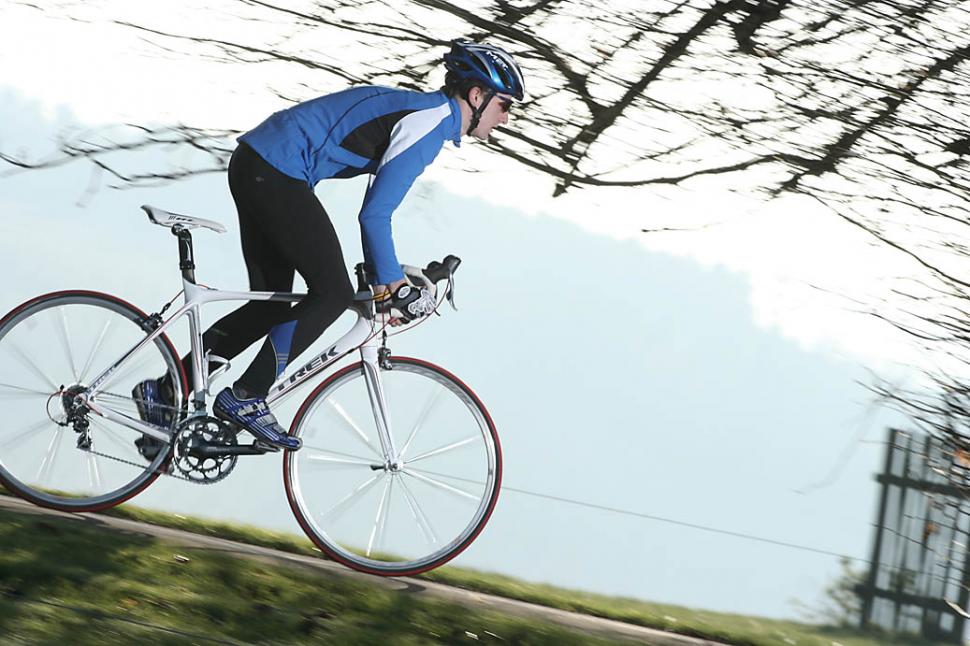 Trek Madone 5.2 14
Trek Madone 5.2 14In the office: Trek's Madone family
We've taken delivery of the three Madone 5.2 bikes. Three? Well, one of the main selling points of the Madone used to be that the comfort levels were such that you didn't need a sportive version. Nowadays it's all about choice though, and the 5.2 comes in Pro, Performance and WSD geometries so you can pick the best one for you.
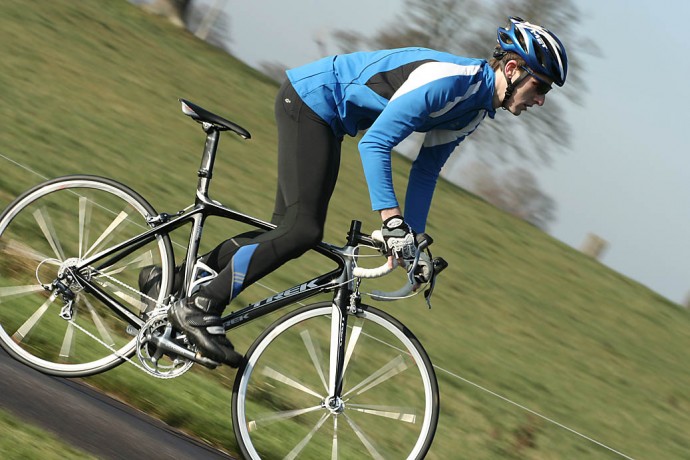
The differences are fairly minimal, but noticeable when the bikes are side by side. We've created this handy – or confusing, possibly – montage of the Pro and Performance models side by side. You can see that the Performance frame (the white one) has a longer headtube (30mm longer) and shorter stem, so the position is more upright. The back end of the bike is exactly the same. Out test bikes had the spacers arranged differently at the front so the positional change is exaggerated a bit, but it is there. We didn't put the WSD in the pic too as it was a 54cm, not a 56, so it didn't really work...

The 2009 bike doesn't share much other than its name with the Madones of old. This is a new design that's got a couple of interesting features. Trek have opted for an asymmetric headset, something we're seeing on many big name bikes this year. the 1.5" lower race allows a larger, and stiffer, steerer and crown, and Trek claim it also reduces weight by 70g.
Another interesting area is the seat tube/seatpost junction. Here Trek have pretty much turned convention on its head: you get a seatpost that fits like a sleeve over an extended seat tube. The clamp is on the seat post, and there are two lengths to choose from giving an adjustment range similar to a standard post. If you think it looks odd, then so did we – what's the thinking behind it?
Well, Trek say that by designing the system this way the high stress area is relocated to a point above the tube junction where the frame can be better designed to cope, and with no seat clamp or seat post the top tube/seat tube junction can be tuned to give a better ride. Because it only needs 30mm of overlap, rather than the more usual 80mm, it's lighter too. Anyway, better designed or not we were specifically instructed on the right amount of tightening for those bolts...
The bottom bracket is unusual too. instead of adhering to the standard 68mm width, Trek have extended the bottom bracket to 90mm and developed a line of internally fitted bearing sets to fit most cranksets. Doing this allows them to make the down tube and chainstay bridge wider and increase stiffness in this important area. Oh, and it's lighter too. Of course.
Anything else? Well, the usual 'it's so laterally stiff yet vertically compliant' line, asymmetric chainstays, a replaceable gear hanger at last, better rear brake cable routing, some unusual tyres that are red on one side and black on the other, and co-moulded dropouts in the fork that are added in the moulding process to improve alignment.
Needless to say, we'll be getting some miles in on all three bikes in the next few weeks to give you our impressions of the different models.
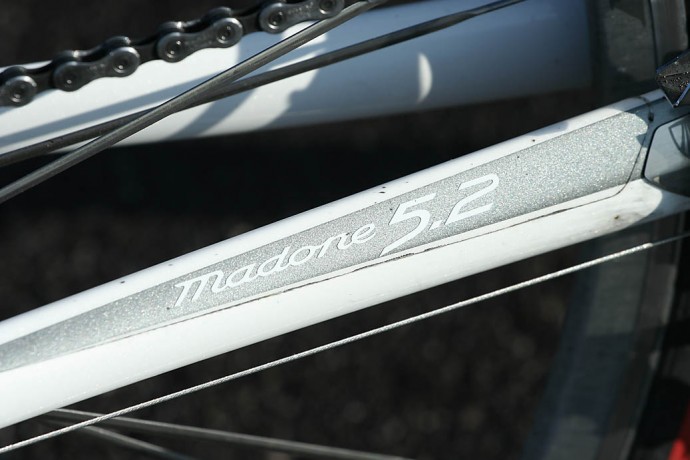
Dave is a founding father of road.cc, having previously worked on Cycling Plus and What Mountain Bike magazines back in the day. He also writes about e-bikes for our sister publication ebiketips. He's won three mountain bike bog snorkelling World Championships, and races at the back of the third cats.

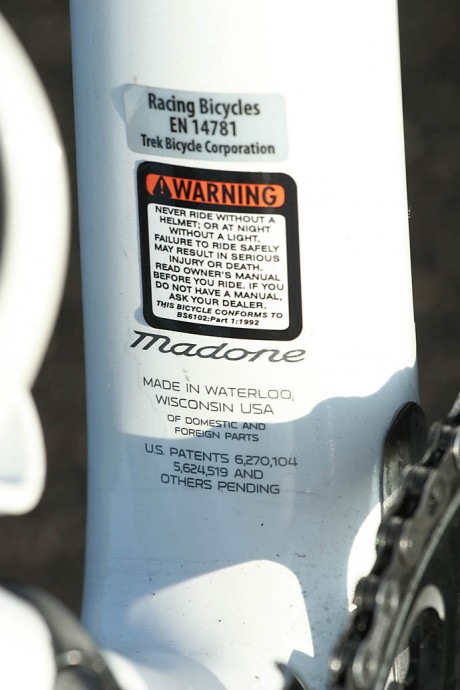
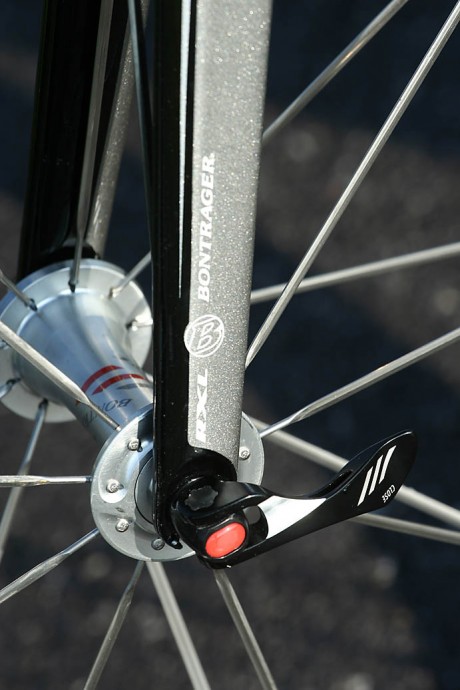
The only gilet I'd buy would be the ultra packable type, and I've not seen anything lighter (sub 40g) than the sportful ultralight. That's now...
Don't forget, each of these places is a life hazard.
It seems what you're searching for is a USB Micro to USB Type-C.
Shetland Islanders must be a right bunch of Jessie's these days. The total population of the islands is less than 23,000 and Lerwick where the...
The same author seems to show something that looks like a shared space in his peice about the 85th percentile speed. However rather than an fully...
Strange how report results tend to match the expectations of those that paid for them.
It should be noted that socialism doesn't prevent folk from starting or running their own succesful busineses. It's about making sure no-one get...
London does seem to exist, making it REAL, and also seems to be part of the WORLD, it is not a figment of someone's imagination, so by being there,...
Look at London and the way that better infrastructure has encouraged cycle use. On some stretches the bicycle is the most numerous vehicle type....
Meanwhile the police throw significant resource at the Angela Rayner tax issue that should/could be handled by HMRC....